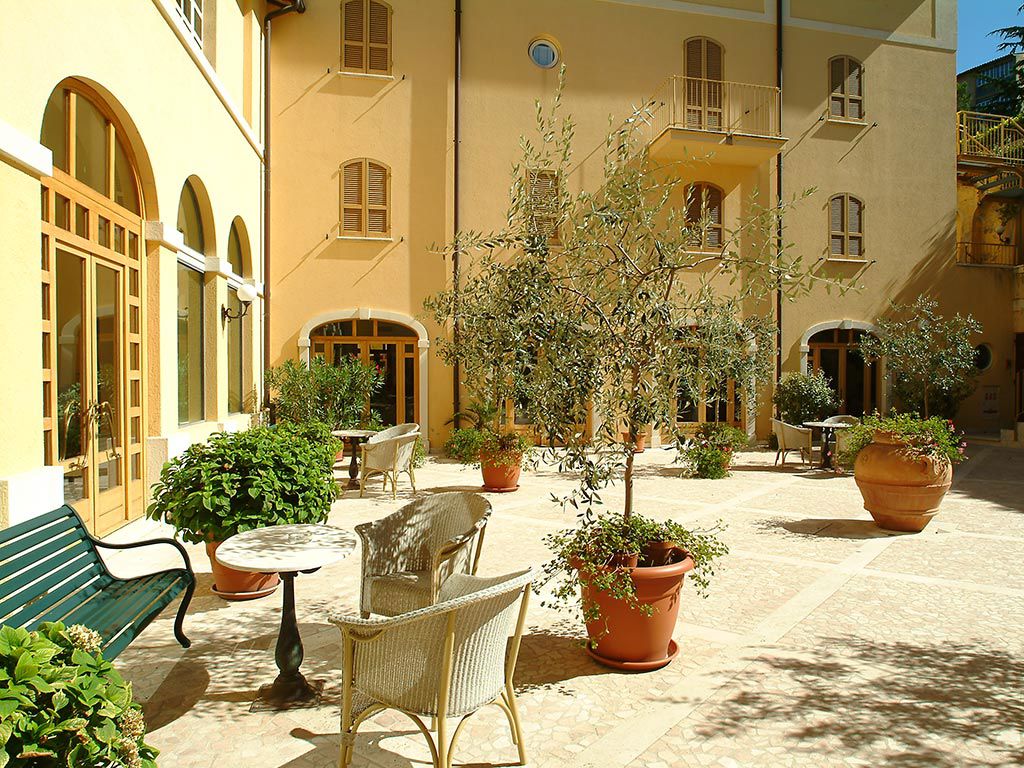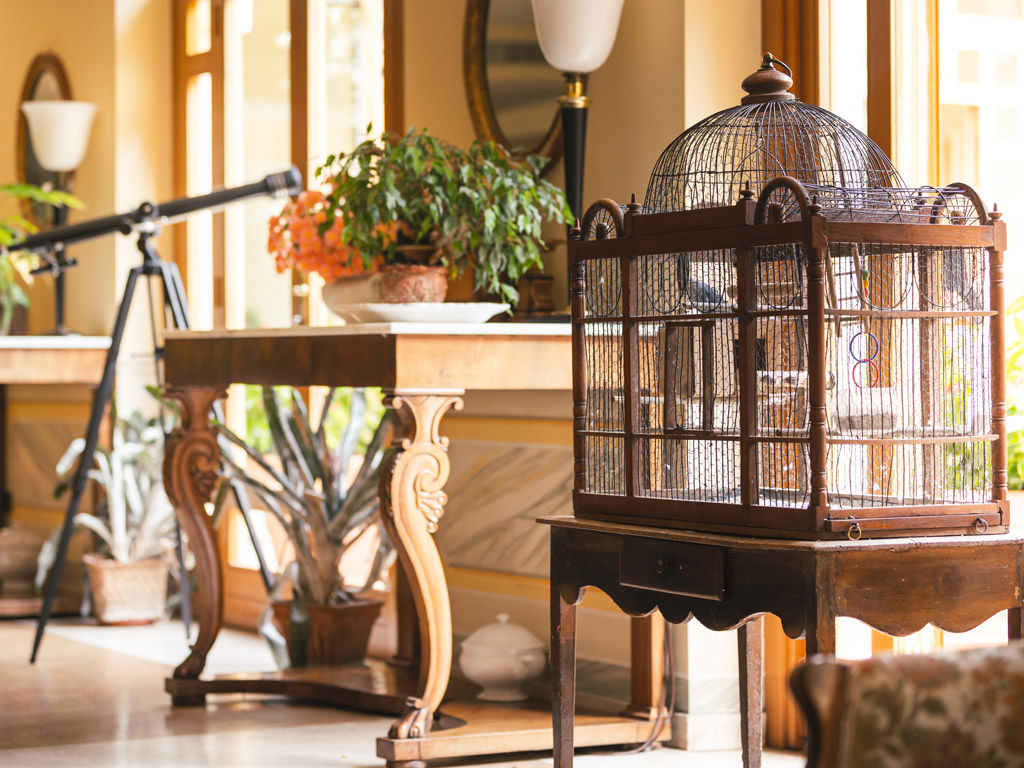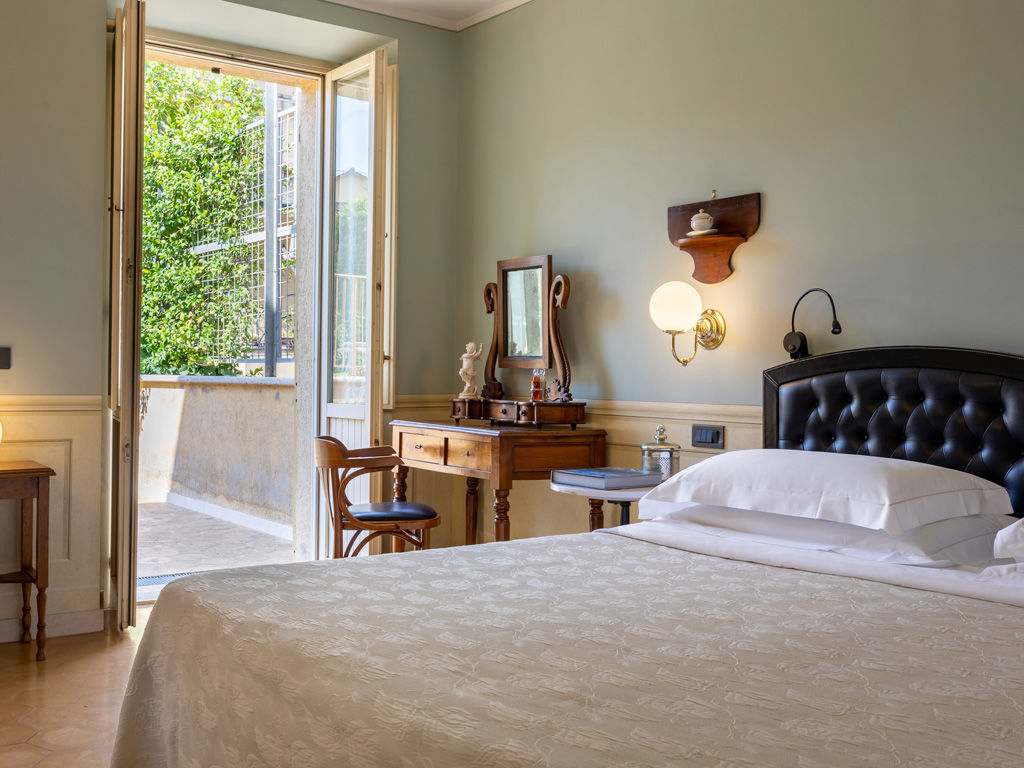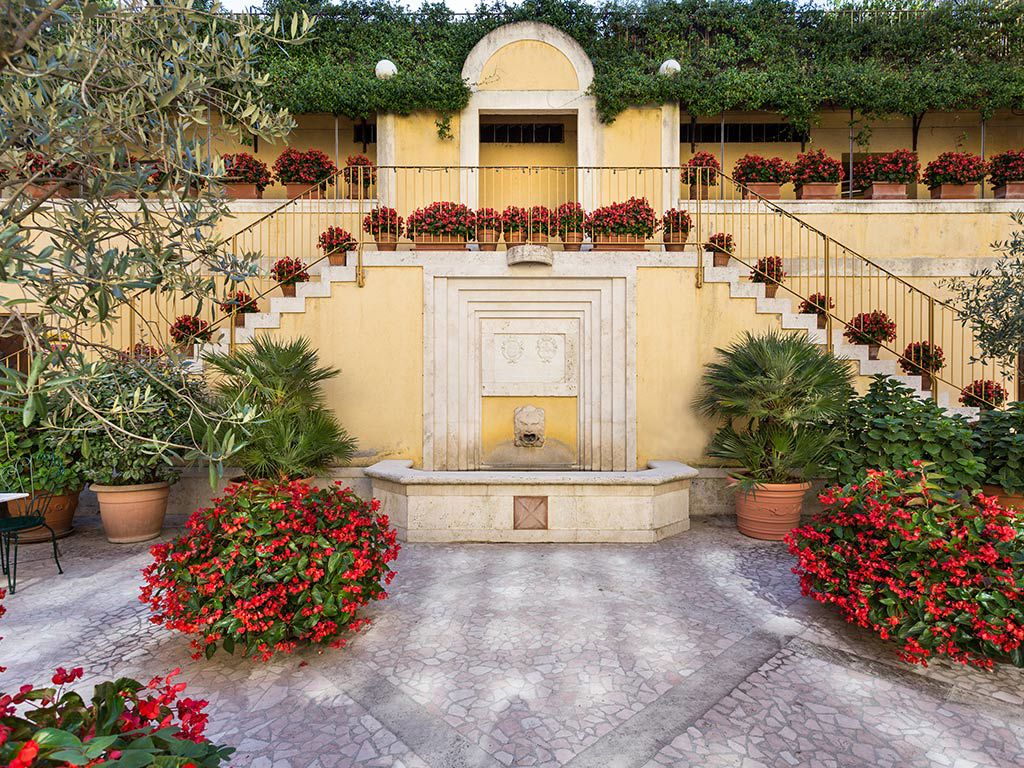The Hotel San Luca is located in a building dating back to the mid-19th century, once used as a tannery and later recovered and rebuilt by the Zuccari family. As you enter the hotel, freshness and brightness will surround you: the natural light filters through the arcade that opens into the central courtyard and reflects on the room’s pastel walls. In the hall, comfortable armchairs are arranged around an 18th-century fireplace and antique furnishings make guests feel right at home. Two canaries occupy an antique birdcage, which blends nicely with the background of pastel colours from the striking collection of 19th-century tureens on display.

It was on a day in 1198 that a spring miraculously gushed out in the garden of a Spoleto convent by the hands of Pope Innocent III. Known since then as “the holy wellspring”, the waters were believed to have healing powers and for this reason, it was ordained that pilgrims could freely draw from the well. In 1601, the town’s vice-governor arranged for the restoration of the spring and a tablet, which still remains today, was placed to serve as a memorial of the event.
In 1992 Paolo Zuccari, an industrialist with a passion for building, decided to purchase the old tannery and the 3-year construction project began based on a design by the Roman architect Zanmatti. Soon thereafter, Paolo’s wife Daniela left her career as a literature professor to run the hotel, which was soon listed in some of the world’s most important travel guides: Michelin, Karen Brown and Touring Club, while earning a top rating from Tripadvisor. The hotel is currently managed by their daughter Federica and husband Carlo, who are always ready to serve guests with courtesy and professionality.



The rooms are spacious, colourful, soundproof, and extremely clean, filled with amenities and featuring 2 meter-wide double beds. The large bathrooms are finished with Carrara marble, towel heater, and fogless mirror. The hotel is air-conditioned and drapery- and carpet-free. The building complies with all the current regulations.

In the courtyard, where breakfast and cocktails are served on warm weather days, stands a fountain with a stone tablet from 1601 hanging above. For many years the stone, bearing a Latin inscription, was covered with ivy but following the restoration it was made legible once again. The tablet bears the City of Spoleto’s coat of arms, St. Ponziano on horseback and a depiction of Prospero Biscuri or Bisonti, the city’s vice governor that had it placed there. Next to the tablet is a large stone lion head. Partially submerged in the waters from the spring, a spout of water continues to gush from the lion’s mouth.